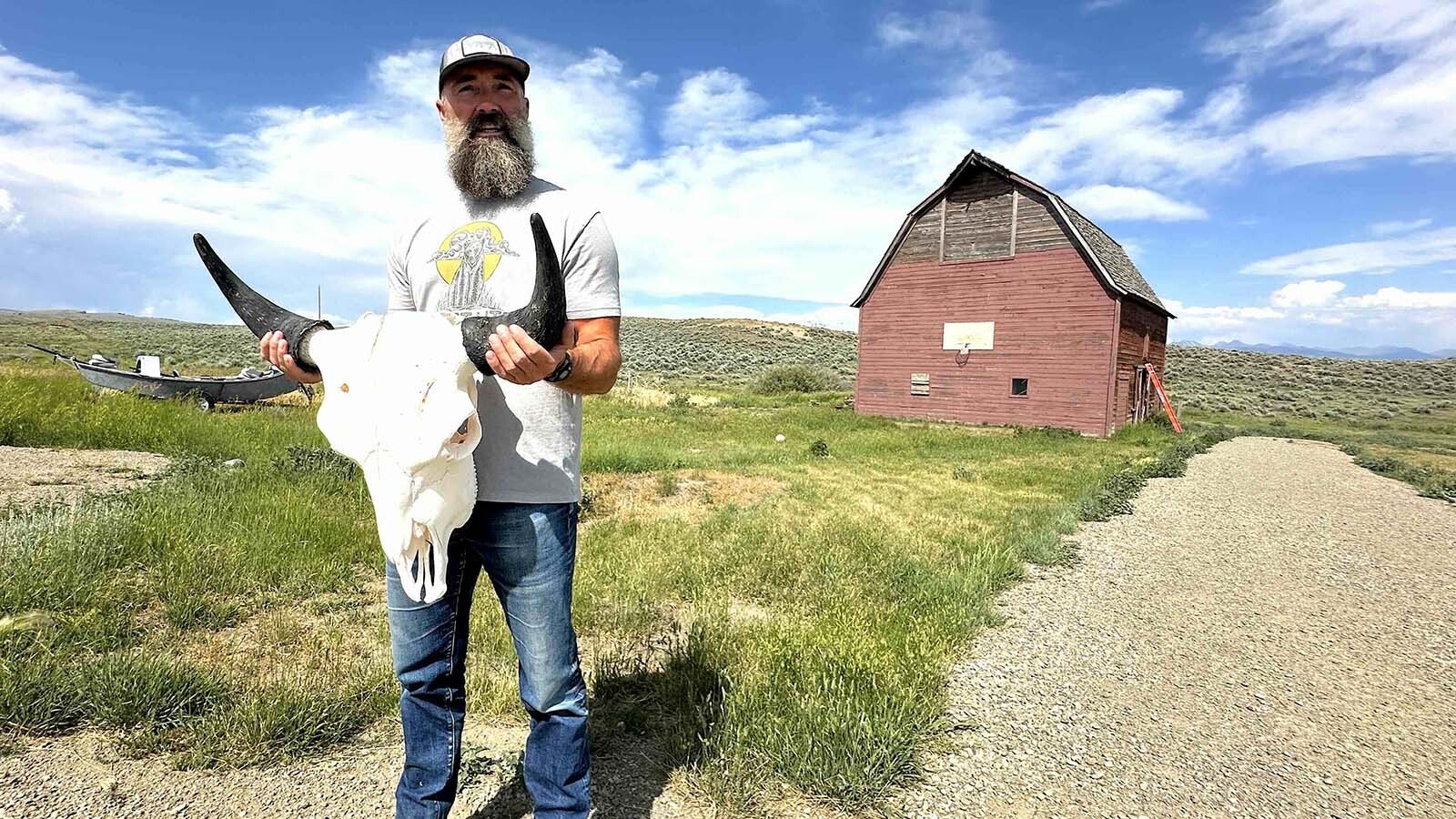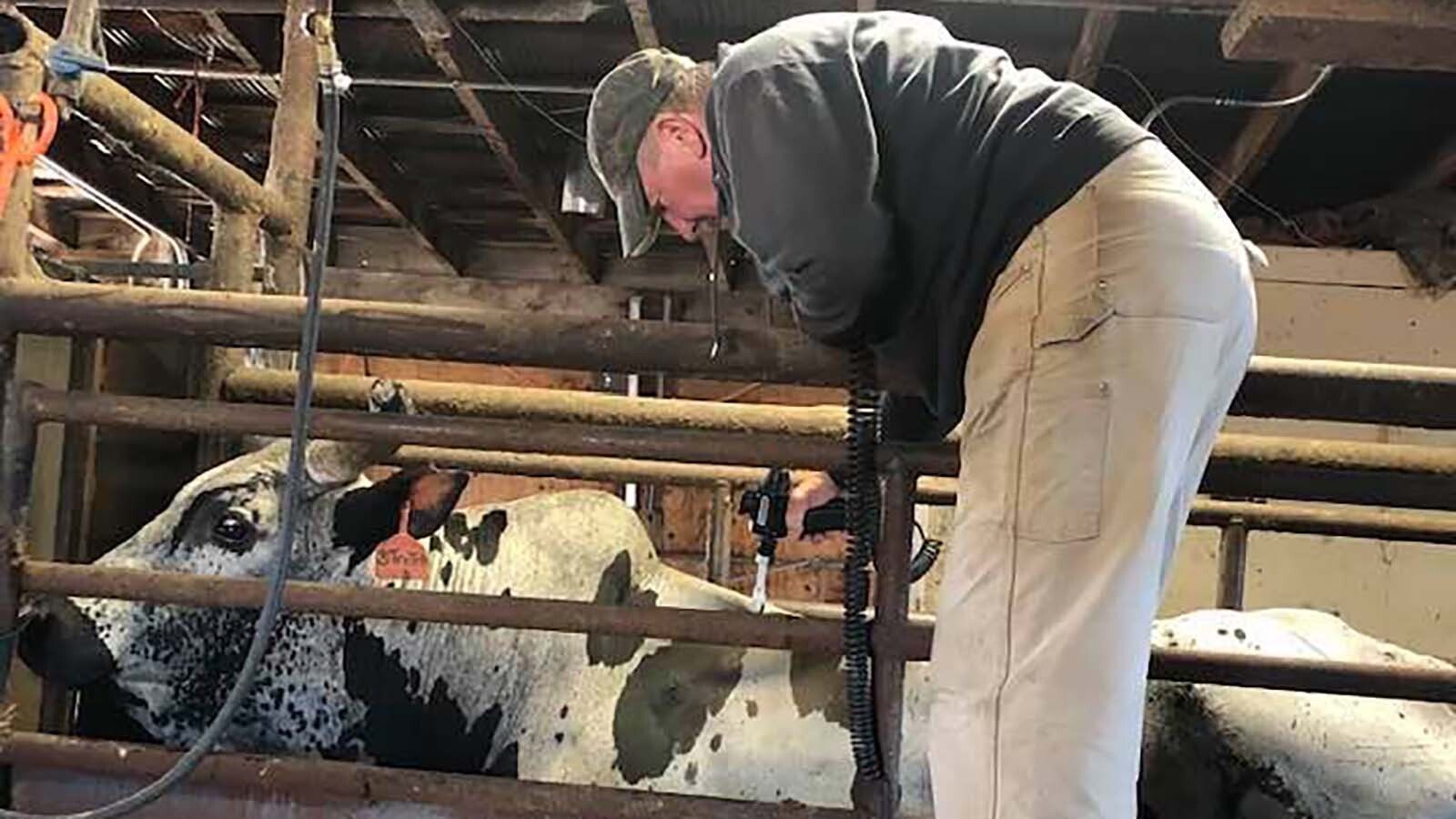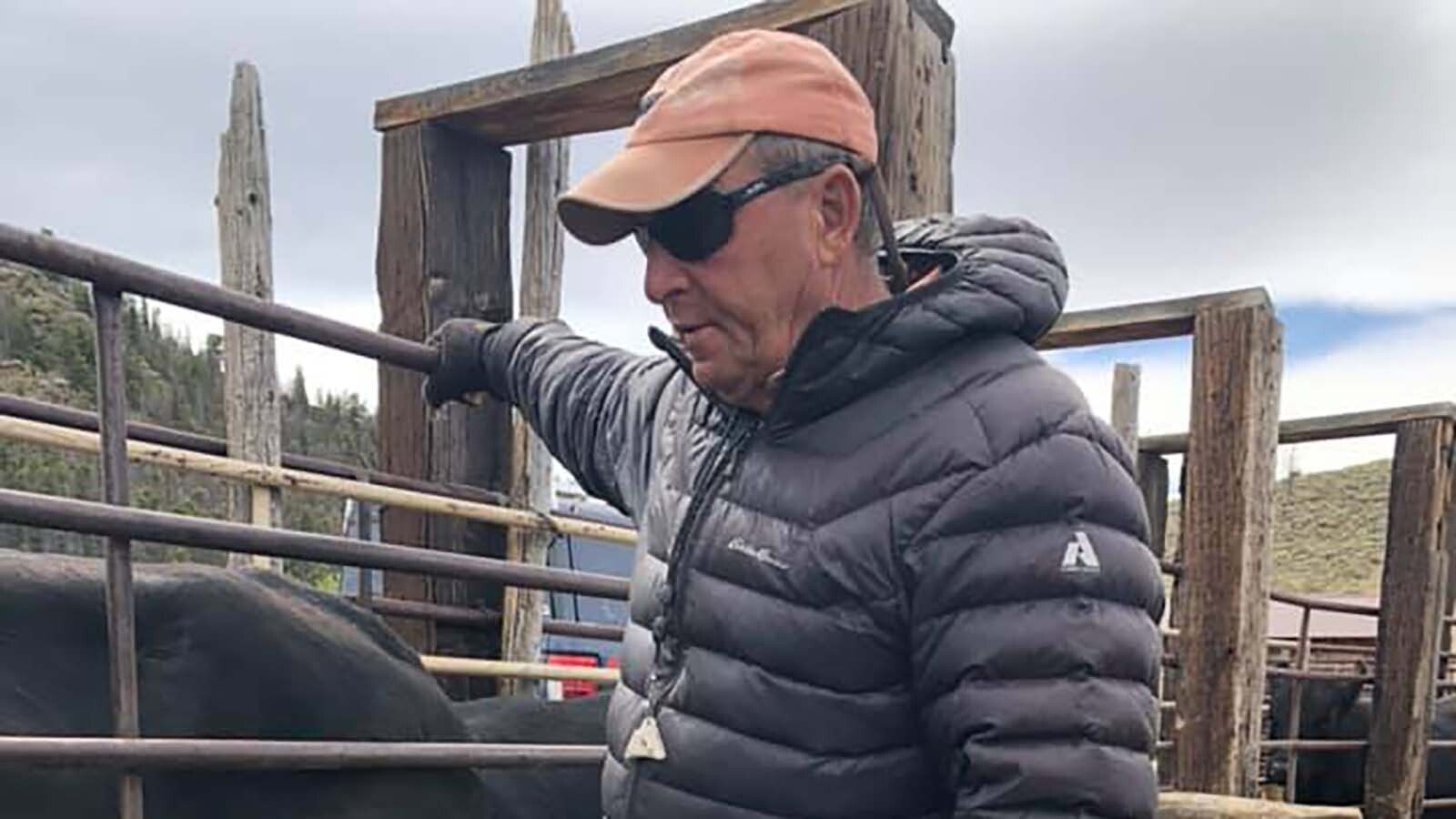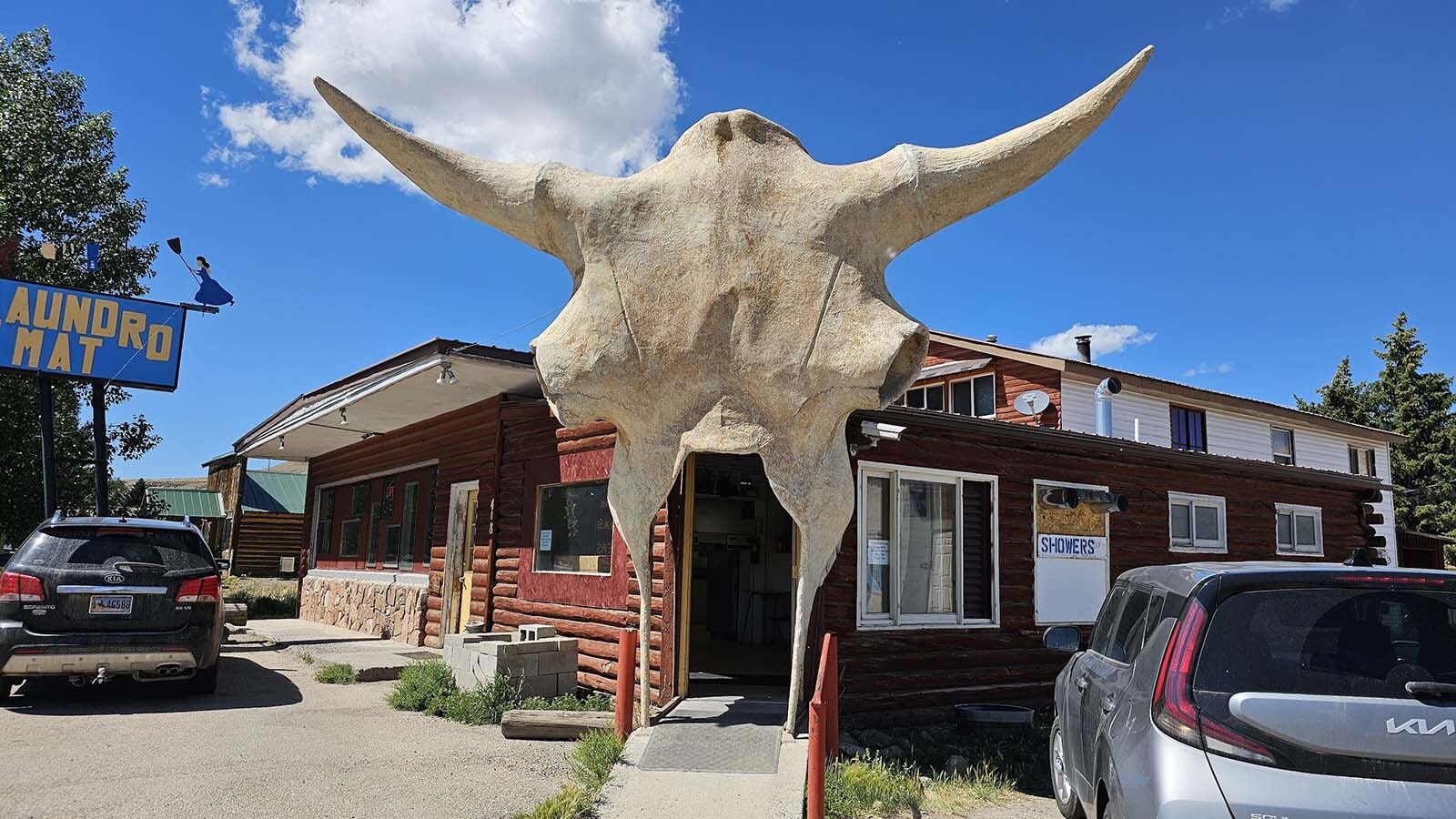The scene in a popular social media video might seem surreal – honeybees swarming inside a Krispy Kreme donut display case – while the store’s workers and customers seem utterly unconcerned.
However, a Wyoming beekeeper said it makes perfect sense.
“What you’re seeing, with the donuts, is that the bees have found sugar. It looks like the bees are in there stealing the sugar off the glazed donuts. Bees are scavengers. They will steal sugar off pop, candy or whatever else they can find,” Cheyenne beekeeper Michael Jordan told Cowboy State Daily.
The honey bees in the video took over a Krispy Kreme outlet in Guadalajara, Mexico. They were probably tempted in by the donut store’s open-air design, Jordan said.
But don’t expect a similar perk (so to speak) at Wyoming pastry shops, he added.
Stores here are sealed too tightly for bees to easily get in, and even if they did, American health and safety standards probably wouldn’t allow them to stay.
“I don’t think you could do anything like this in the United States,” Jordan said. “There are just too many rules and regulations.”
Bees Harmless
Walking into a pastry shop and seeing a display case full of bees might give many folks a terrible start. However, Krispy Kreme staff and customers in the video are perfectly safe, Jordan said.
The bees are displaying “swarm behavior” and are focused on one thing – getting all the sugar they can.
“They’re all looking for the location to make their landing and steal sugar,” Jordan said. “Honeybees are aggressive only when they sense a direct threat to their hives. When they’re out foraging, they’re too busy working to be bothered by people, so long as people are respectful of them.
“You could reach in there and grab a donut, and the bees would just move out of the way. The only way you would get stung is if you accidentally pinched a bee between your finger and the donut.”
He also advised to make sure all the bees had cleared away before trying to scarf down the sweet treat.
“As long as you didn’t get any bees in your mouth while you’re eating a donut, you should be safe,” Jordan said.
And what about leftover bee slobber, or vomit, on the donut?
Well, as it turns out, many of us eat that anyway.
“Honey is bee vomit,” Jordan said.
Changing Colors
It makes sense that the sugary glaze on donuts would be a bee magnet. It’s not unlike the “hard sugar patties” that beekeepers feed their bees during the winter, when natural forage isn’t available, Jordan said.
“We feed sugar to our bees in the winter, just like cattle ranchers feed their cows hay during the winter,” he said.
During the winter, wild bees go semi-dormant.
“They will ‘bundle and huddle,’” Jordan said. “They’re rotate in and out – with the colder bees moving toward the middle of the huddle and the warmer bees moving outward toward the edges.”
It’s also a little-known fact that bees’ natural color is actually essentially clear, Jordan added. They can take on the color of whatever they consume, as will their honey and honeycombs.
Bees are typically yellow because that’s the color of the nectar they get from most flowers, he said.
“There’s an old story of bees that were making green and purple honey. They were actually raiding an M&Ms candy factory, and were getting the colors off of the candy coating,” Jordan said.
Bees, and their combs and honey, will also take on the shade of other food colorings, if they’re fed anything with coloring in it, he added.
And since some donut icing contains food coloring, that could happen with bees in Guadalajara.
“If they are scavenging off donuts that have pink icing, you might get some pinkish bees and combs,” Jordan said.
Bee Life Rough, Short
When they’re active during the warm months, bees literally work themselves to death, Jordan said.
They don’t sleep and are constantly going, either cleaning the hive or foraging for sugar. And all that effort leaves them with about a 30-day lifespan.
Going out to forage is so dangerous, it can make their lives even shorter.
“When bees are flying through the air, their wings and their whole little bodies are getting torn up,” Jordan said.
Colliding with even a “speck of dust” midair can cause bodily damage. And considering how windy and dusty Wyoming can be, it’s particularly rough on honeybees here, he said.
How To Make It Fly In America?
The only way a “bee-friendly” pastry shop could work in America is if a store owner advertised it as a “feature” of the business and put up ample signage warning customers in advance, Jordan said.
Even then, the risk of liability – should somebody get stung – would probably be too great.
But what if bees did somehow find their way into a Wyoming donut haven and decided to go on a swarming sugar binge?
The only way to get rid of them would be to bring in a beekeeper, Jordan said.
A beekeeper could track the bees’ routes toward the store and set up traps to capture them before they got there, he said. Once enough bees were trapped, it might be possible to relocate the hive.
Mark Heinz can be reached at mark@cowboystatedaily.com.





